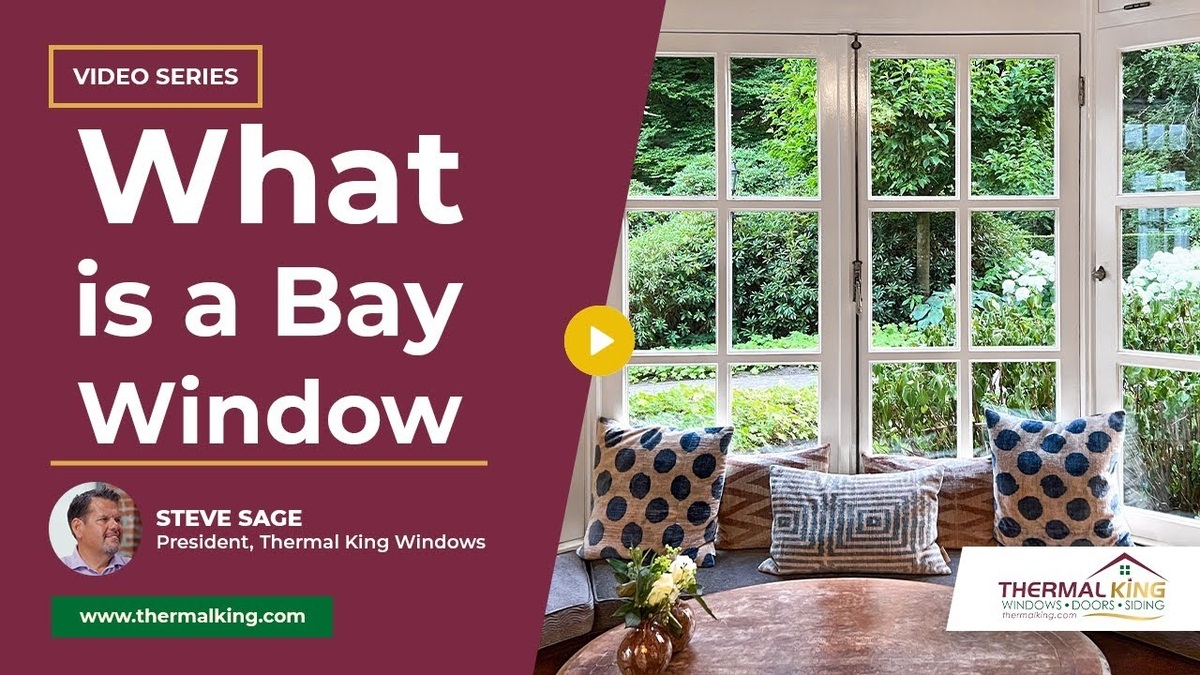A window sash is an integral component of a window that plays an important role in both its functionality and aesthetic appeal. Understanding the design and purpose of a window sash can help homeowners make informed decisions about window replacement, restoration, or maintenance. This article explains the various aspects of window sashes, including their design, materials, and the vital role they play in the overall performance of a window.
The Basics of Window Sashes
At its core, a window sash is the framework that holds the glass panes in place. It can be made from various materials, including wood, vinyl, aluminum, or fiberglass, and comes in different styles depending on the window type. The sash is typically divided into two main categories: single-hung and double-hung sashes, each offering unique features and benefits.
Single-Hung vs. Double-Hung Sashes
Single-hung sashes consist of two sections, where the bottom section can be raised to open the window while the top section remains fixed. This design is common in many traditional homes and is often favored for its simplicity and ease of use. Additionally, single-hung windows are generally more energy-efficient, as they have fewer moving parts and a tighter seal when closed, which can help reduce heating and cooling costs.
On the other hand, double-hung sashes allow both the top and bottom sections to move independently. This feature not only enhances ventilation but also makes cleaning the exterior of the window easier, as both sashes can tilt inward. Furthermore, double-hung windows are often seen as more versatile, as they can be opened from either the top or bottom, providing homeowners with greater control over airflow and natural light.
Other Types of Sashes
Beyond single and double-hung designs, there are also casement sashes, which are hinged on one side and open outward, and sliding sashes that move horizontally. Each type serves different architectural styles and functional needs, offering homeowners a variety of options to choose from. Casement windows, for instance, are particularly effective at capturing breezes, as they can be fully opened to allow for maximum airflow. They are often used in modern and contemporary homes, where clean lines and unobstructed views are desired.
Sliding sashes, on the other hand, are ideal for spaces where traditional swinging windows may not fit, such as in tight areas or on patios. They glide smoothly along a track, making them easy to operate, and are often favored for their sleek appearance. Additionally, many sliding windows come with energy-efficient glass options, which can further enhance their appeal by providing insulation and UV protection. With so many choices available, selecting the right sash type can significantly impact both the aesthetics and functionality of a home.
The Function of a Window Sash
The primary function of a window sash is to hold the glass panes securely in place. However, its role extends beyond mere support. A well-designed sash contributes to the window’s overall energy efficiency, security, and aesthetic appeal.
Energy Efficiency
Energy efficiency is a critical concern for homeowners, particularly in regions with extreme weather conditions. A properly sealed window sash minimizes air leaks, reducing heating and cooling costs. Modern sashes often feature weather stripping and insulating materials that enhance their energy efficiency, making them a crucial component in sustainable home design. Additionally, advancements in technology have led to the development of double or triple-glazed glass options that, when paired with high-quality sashes, can significantly improve insulation. This not only helps in maintaining a comfortable indoor temperature but also reduces the carbon footprint of the home, aligning with eco-friendly living practices.
Security Features
Security is another vital function of a window sash. A robust sash can deter potential intruders by providing a strong barrier against forced entry. Many modern window sashes come equipped with locking mechanisms that further enhance security, ensuring peace of mind for homeowners. Furthermore, the materials used in the construction of window sashes, such as reinforced vinyl or aluminum, add an extra layer of durability and resistance to break-ins. Homeowners can also opt for laminated glass, which is more difficult to shatter, thus enhancing the overall security profile of the window. This comprehensive approach to security not only protects the home but also contributes to the overall value of the property, making it a wise investment for the future.
Materials Used in Window Sash Construction
Window sashes can be crafted from various materials, each offering distinct advantages and disadvantages. The choice of material can significantly impact the window’s performance, maintenance needs, and overall aesthetic.
Wood Sashes
Wood has long been a popular choice for window sashes due to its natural beauty and excellent insulation properties. Wooden sashes can be painted or stained to match a home’s decor, adding to its curb appeal. However, wood requires regular maintenance to prevent rot, warping, and insect damage.
Vinyl Sashes
Vinyl sashes have gained popularity in recent years due to their low maintenance requirements and durability. They are resistant to moisture, fading, and cracking, making them an excellent choice for various climates. Additionally, vinyl sashes are available in a range of colors and styles, providing versatility for homeowners.
Aluminum and Fiberglass Sashes
Aluminum sashes are known for their strength and durability, making them suitable for modern architectural designs. They are lightweight and require minimal maintenance. However, aluminum can conduct heat, which may impact energy efficiency unless thermal breaks are incorporated.
Fiberglass sashes offer excellent insulation and are resistant to warping and cracking. They can be painted to match any home style and are often considered a premium option for window sashes.
Design Considerations for Window Sashes
When selecting a window sash, several design considerations come into play. These factors can influence not only the aesthetic appeal of a window but also its functionality and performance.
Style and Aesthetics
The style of a window sash should complement the overall architecture of a home. Traditional homes may benefit from classic wooden sashes, while modern designs may call for sleek aluminum or vinyl options. Homeowners should consider how the sash’s design fits into the broader context of their home’s exterior.
Size and Configuration
The size and configuration of a window sash are equally important. Custom-sized sashes may be necessary for unique window openings, and the configuration should align with the intended use of the window. For instance, larger sashes may be more suitable for expansive views, while smaller sashes can provide a cozy, intimate feel.
Maintaining Window Sashes
Proper maintenance of window sashes is essential to ensure their longevity and performance. Different materials require different care, so understanding the specific needs of each type is crucial.
Wood Sash Maintenance
Wood sashes should be inspected regularly for signs of rot or insect damage. Repainting or restaining every few years can help protect the wood from the elements. Additionally, ensuring that the weather stripping is intact will help maintain energy efficiency.
Vinyl and Aluminum Sash Care
Vinyl and aluminum sashes require less maintenance than wood. Regular cleaning with mild soap and water is usually sufficient to keep them looking their best. Homeowners should also check for any signs of wear or damage, particularly around the seals and locks.
Common Issues with Window Sashes
Drafts and Air Leaks
One of the most common issues with window sashes is the presence of drafts and air leaks. Over time, seals can wear down, allowing air to escape or enter the home. This not only affects comfort but can also lead to increased energy costs. Homeowners should regularly check for drafts and consider resealing or replacing the sash if necessary.
Difficulty Opening or Closing
Another frequent problem is difficulty in opening or closing the window. This can occur due to misalignment, swelling of the wood, or debris accumulation in the tracks. Regular maintenance, including cleaning and lubricating the tracks, can help prevent this issue from arising.
Replacing Window Sashes
When a window sash becomes damaged or inefficient, replacement may be necessary. Understanding the replacement process can help homeowners navigate this task with ease.
Assessing the Need for Replacement
Before deciding to replace a window sash, it’s essential to assess its condition. Signs of damage, such as cracks, rot, or difficulty operating the window, may indicate that replacement is necessary. Additionally, if energy bills are rising due to drafts, it may be time to consider new sashes.
The Replacement Process
Replacing a window sash typically involves removing the old sash and installing a new one. This process may require specialized tools and skills, particularly for custom or historic windows. Homeowners may choose to hire a professional for this task to ensure a proper fit and finish.
Final Thoughts – Window Replacement in Omaha
Understanding window sashes is essential for homeowners looking to maintain or improve their windows. From their fundamental role in holding glass panes to their impact on energy efficiency and aesthetics, window sashes are a critical component of any window system. By recognizing the different types, materials, and maintenance needs, homeowners can make informed decisions that enhance their home’s comfort, security, and beauty.
We’ve helped thousands of homeowners navigate their window replacement – contact us today for a free evaluation.




